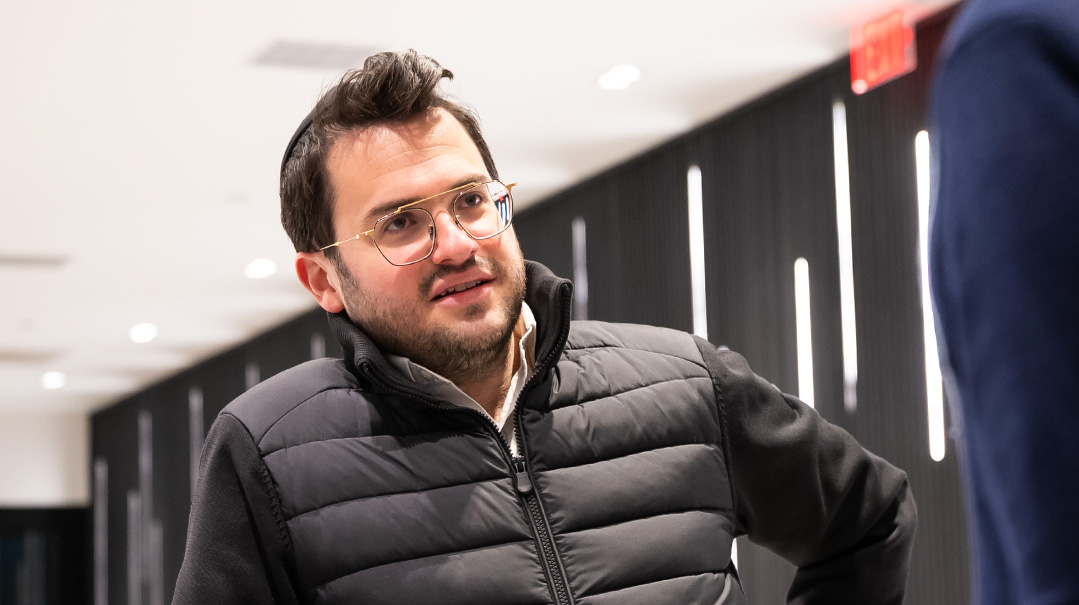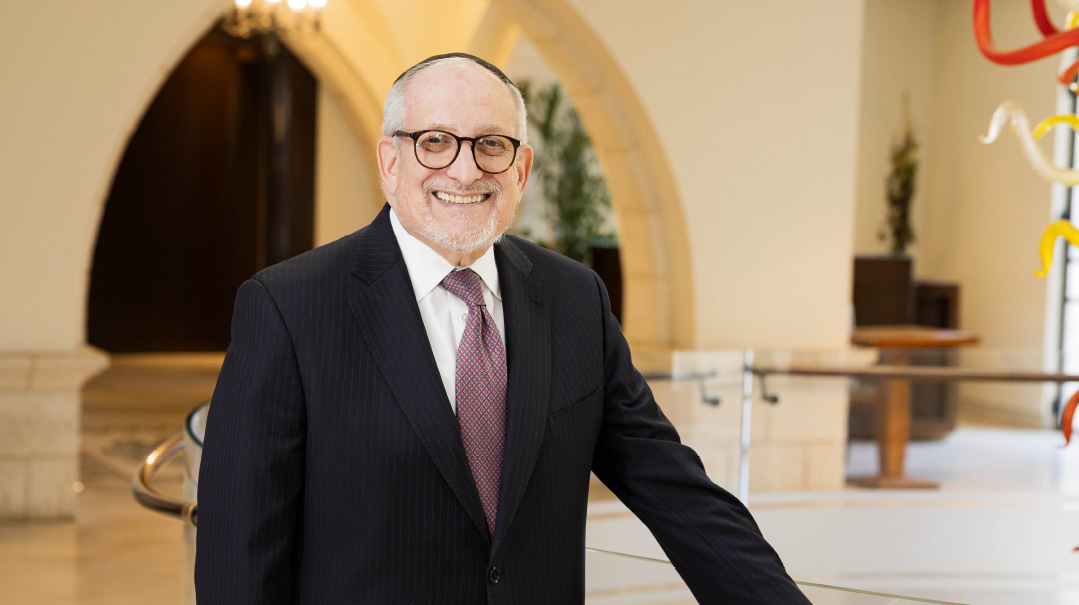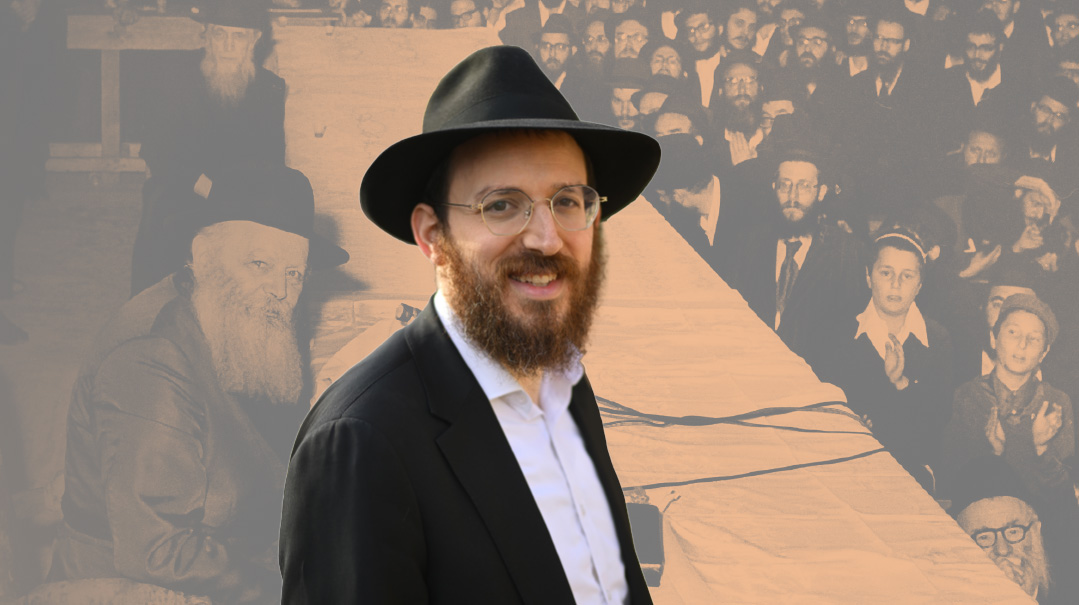Not Giving Up on Uman
| September 2, 2020Can thousands of Breslovers fuse spirituality with safety in the heart of Ukraine?

When Breslover chassidim learned that the Ukranian government had declared a lockout on the annual pilgrimage to Rebbe Nachman’s kever in Uman for Rosh Hashanah, banning foreigners from entry to the country starting last Motzaei Shabbos, they didn’t waste any time. Hundreds of chassidim flocked to Ben Gurion airport and scrambled for remaining available tickets at inflated prices, in both direct and roundabout routes, in order to make it to Uman before the gates shut. Ukraine International Airlines added additional flights to Kiev and Odessa to fly the many anxious Breslovers into Ukraine before the ban was to take effect.
But making it to Ukraine didn’t mean they were home safe in Uman. Chassidim who arrived Thursday morning were held for hours (many of them ordered to purchase return tickets to Israel) until the Israeli ambassador intervened and secured permission for them to continue on to Uman. But hundreds of chassidim who arrived on later Thursday flights, also before the deadline, were detained in the airport until an hour before Shabbos while Ukrainian authorities were insisting on sending them back on return flights on Shabbos. Following frantic diplomatic efforts and a bypassing maneuver by Interior Minister Aryeh Deri, the Israelis were released and allowed to spend Shabbos in Kiev, not knowing if they’d be deported Motzaei Shabbos. By Sunday, they’d all reached Uman.
Many veteran Uman travelers who didn’t want to spend the next three weeks in Ukraine but who would like to make the trip before Rosh Hashanah are still hoping things will change until the holiday. Will the Ukrainian authorities decide to welcome the chassidim who have become regular visitors — and who give their economy a major boost — or will they keep the gates locked?
Anyone whose associations with Breslov are limited to images of white-yarmulke and jean-clad young men dancing in the streets probably can’t help but wonder what the fuss is all about. Why are these chassidim working so hard, pulling all possible strings and pulling out all the stops to travel en masse to Ukraine when the world is still plagued by a pandemic? Why risk catching or transmitting a potentially fatal disease just for two days of prayer?
For Breslover chassidim, traveling to Rebbe Nachman’s grave for Rosh Hashanah is a cornerstone of the entire year’s avodah. The pilgrimage has traditionally included an element of hardship and sacrifice as well. Reb Nosson, Rebbe Nachman’s prime disciple, once said, ”Even if the road to Uman were paved with knives, I would crawl there — just so I could be with my Rebbe on Rosh Hashanah!” In fact, in Breslov, the obstacles (known as “meniyot”) are an important part of any spiritual quest — they are the all-important tests of one’s sincerity and dedication.
But this year, the pandemic has made all Jews question those very principles that used to seem so clear and basic, and terms like mesirus nefesh have taken on a new dimension. In a year when it was suddenly halachically preferable not to say Kaddish for a parent; in a year when visiting elderly relatives meant endangering their health; and when the very definitions of chesed, davening, and serving Hashem took on whole new proportions; the imperative for the Breslov pilgrimage to Uman has become murky as well. When the virus is still racking up casualties in Eretz Yisrael, when medical experts are cautioning about the risks, what’s the right course of action?
For Israel’s coronavirus commissioner Professor Roni Gamzu, the course is clear: Gamzu has been vocally opposed to this year’s pilgrimage, announcing that worshippers would have to forgo the “party,” predicting that it could prompt a major spike in coronavirus infections. “The hard way is not always popular. It is complex, it is complicated, and it takes time,” Gamzu said.
Last Wednesday, Gamzu went so far as to ask Ukrainian President Volodymyr Zelensky to ban chassidim from entering Ukraine, raising the ire of several Orthodox MKs. Prime Minister Binyamin Netanyahu’s office swiftly denied that the request came from Bibi, although Gamzu claims he didn’t act independently.
Ukraine is one of the few countries that are currently allowing in Israeli nationals, despite the high coronavirus infection rate in the Jewish state. Still, in deference to the Israeli request, Ukraine Prime Minister Denys Shmyhal said last week’s ban was partly in response to a plea from Israel to prevent an influx of chassidim traveling to Uman, fearing it may become a virus hot spot. “We must protect our citizens and show responsibility to our foreign partners,” Shmyhal said.
While Gamzu called the decision — which is supported by Health Minister Yuli Edelstein — “responsible and correct” and “in the spirit of the time,” which would “preserve the health of thousands of people in Israel and Ukraine,” the next day, United Torah Judaism head and Housing Minister Yaakov Litzman called for Gamzu’s ouster, claiming the coronavirus czar told Ukraine’s president that “Jews will dirty his city and bring diseases.”
Likud MK Miki Zohar lashed out at Gamzu, warning him during a news interview that the flights to Uman would happen anyway, and that he should prepare for that scenario “instead of sending letters to Ukraine in opposition to the prime minister’s point of view.”
A day later, Zohar’s prediction came true: “After swallowing all this criticism over the issue of Uman, I have been proven right by the facts on the ground,” he wrote on social media. “Instead of organizing closely supervised trips for around 6,000 chassidim [which Breslov rabbanim had been negotiating for] instead of the usual 25,000, with careful adherence to guidelines and so forth, what we have happening now is thousands of people traveling out there already without any supervision whatsoever.”
In fact, flying direct or roundabout through other countries, about 3,000 chassidim have already arrived in Uman since the beginning of Elul, much to the consternation of Professor Gamzu. Is there a better way to face the reality of Uman during the year of the pandemic?
Oops! We could not locate your form.








Comments (1)